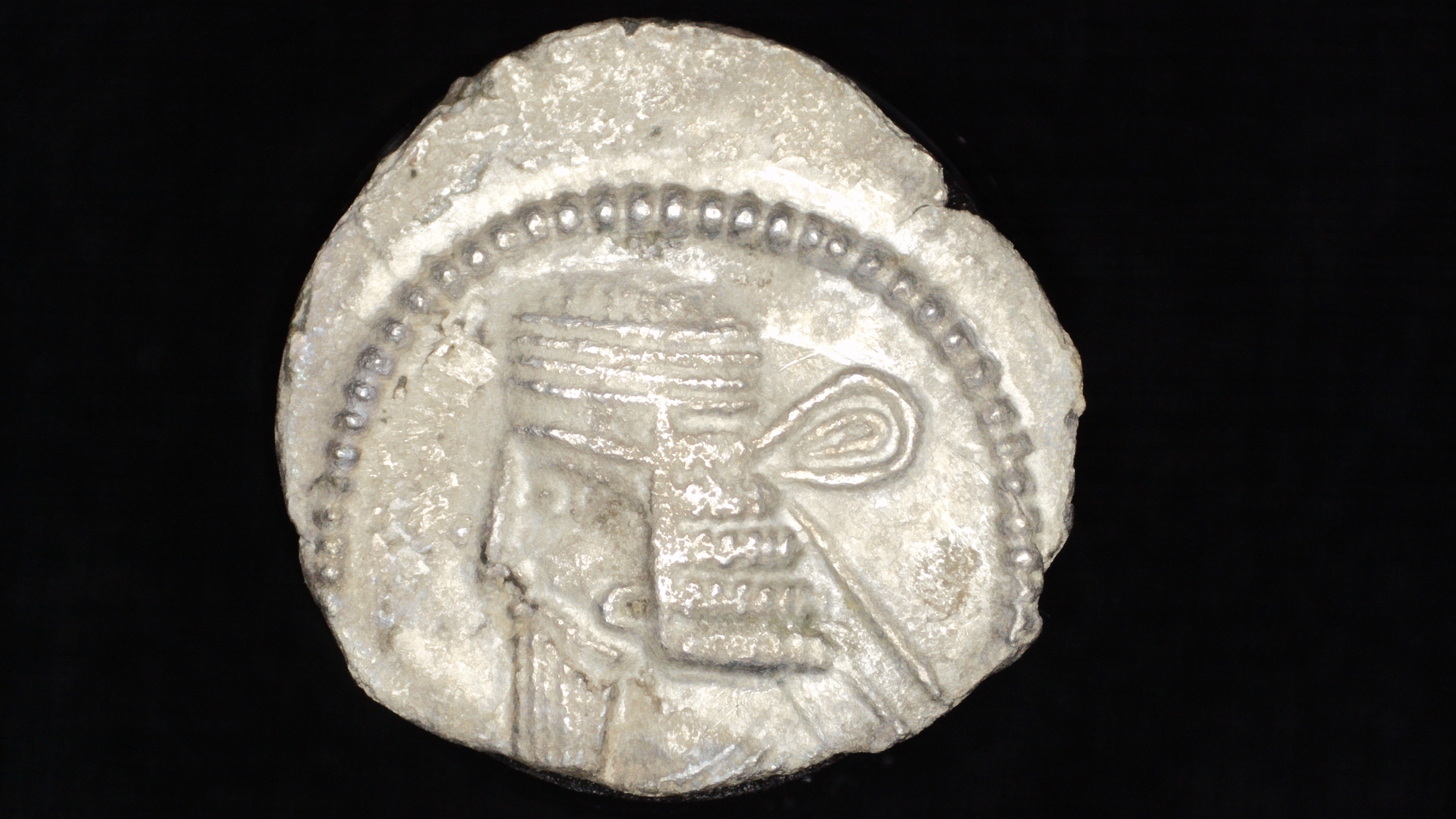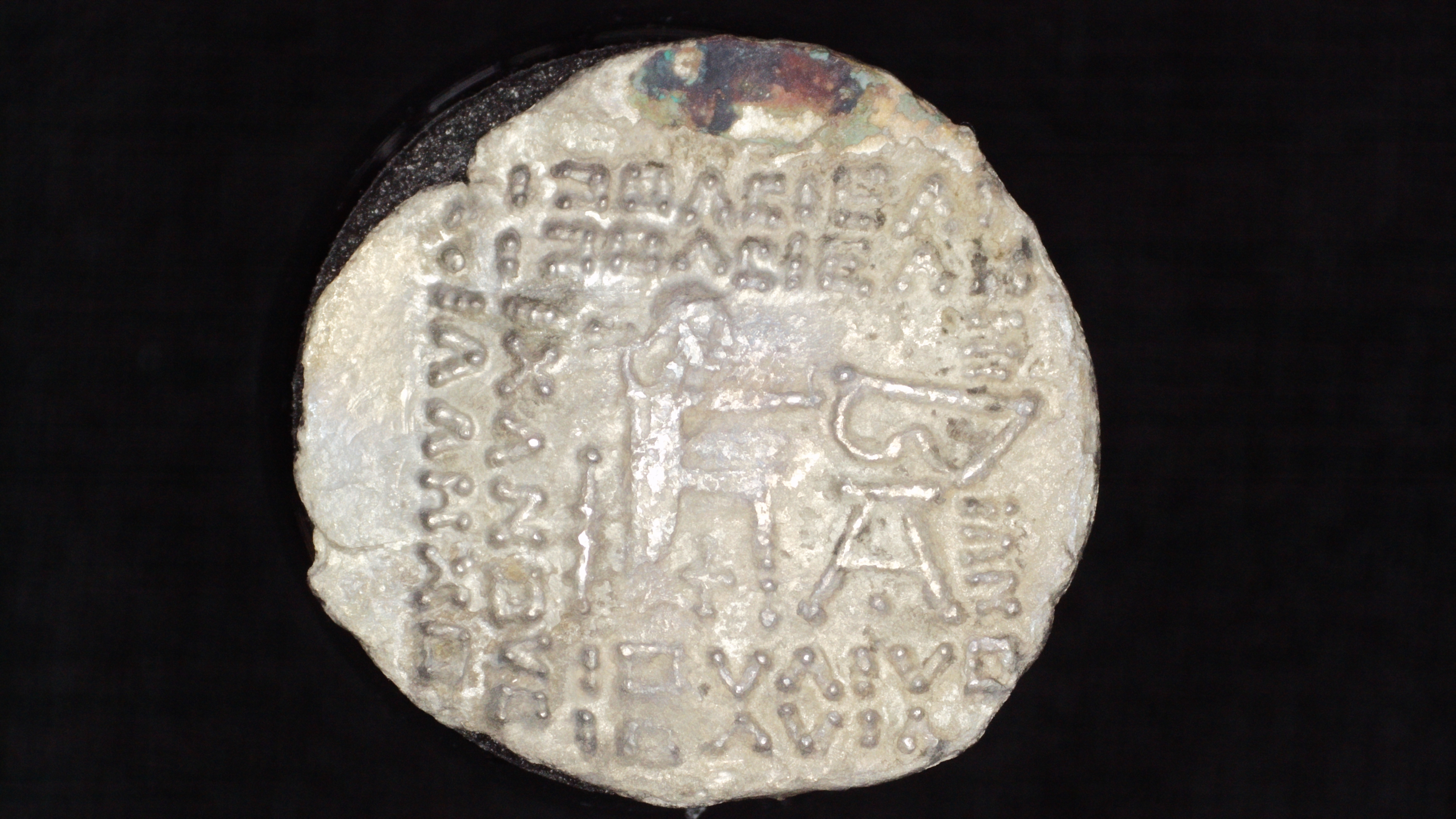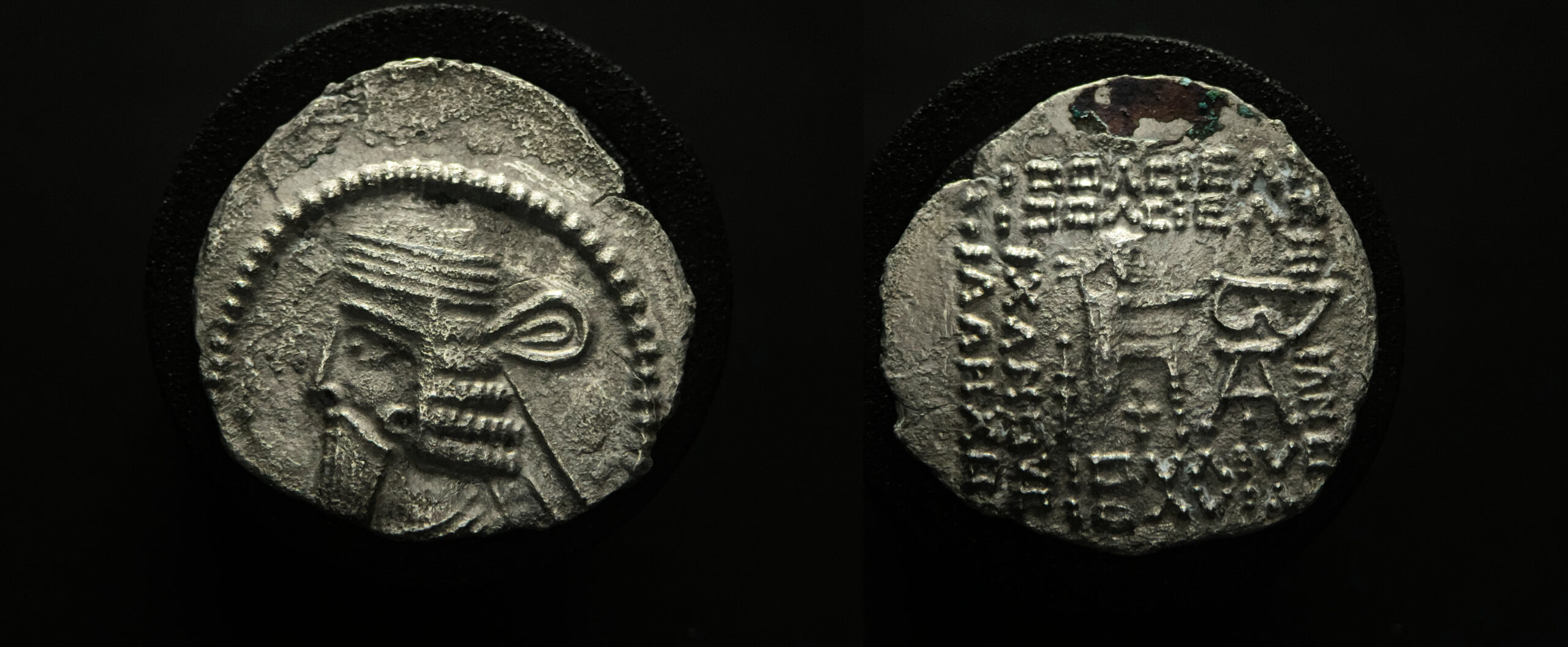Vologases I Silver Drachm from Ekbatana:
A Historically Rich, Accessible Coin
Struck during the reign of Vologases I between AD 51 and 78, this silver drachm is an excellent example of early Parthian imperial identity. It was minted in Ekbatana, one of the most important regional centers in western Iran. The coin combines Persian dynastic tradition with Seleucid-inspired visual and linguistic elements, making it a powerful but affordable entry point into ancient numismatics.
Obverse:
A Realistic Portrait of Parthian Authority
The obverse of the coin shows a bare-headed bust of Vologases I, facing left. His portrait is distinctive and personal. It includes:
- A square-cut beard tapering to the chin
- Wavy hair held by a diadem with looped ends
- A visible earring and torque necklace
- A small wart on the brow, likely an intentional identifier
- A circular beaded border
The decision to depict the king without a tiara is noteworthy. This choice may signal humility, realism, or a deliberate break from the more Hellenized royal styles of earlier rulers. It also helps modern collectors identify this issue as part of early Vologases coinage.
Reverse:
The Seated Archer and Greek Royal Legend
The reverse features the seated archer, a central figure of Parthian coin iconography. The archer, likely representing Arsakes I, is seated on a throne facing right and holds a bow. Beneath the bow is a monogram (type 26), a mintmark or series designation.
Around the archer is a legend written in Greek. Although the Parthians were ethnically and linguistically Iranian, they retained Greek on their coinage due to its broad recognition in trade and administration. This practice continued from the Seleucid period and remained standard in Parthian coins until well into the third century.
Sample Translation:
A typical Greek legend on coins of Vologases I might read:
ΒΑΣΙΛΕΩΣ ΒΑΣΙΛΕΩΝ ΑΡΣΑΚΟΥ ΕΥΕΡΓΕΤΟΥ ΔΙΚΑΙΟΥ ΕΠΙΦΑΝΟΥΣ ΦΙΛΕΛΛΗΝΟΣ
“Of the King of Kings Arsakes, the Benefactor, the Just, the Illustrious, Friend of the Greeks”
Note: The title “Arsakes” was used as a dynastic title by many Parthian kings, regardless of their actual name.
This formula reinforced the legitimacy of the Arsacid line while acknowledging the importance of Hellenistic influence in diplomacy and commerce.

Ekbatana:
A Mint of Imperial Significance
Ekbatana, the site of this coin’s minting, was a cultural and strategic hub in western Iran. With roots in the Median and Achaemenid empires, the city retained symbolic importance well into Parthian times. Coins minted in Ekbatana are recognized for their strong, sometimes heavier portraits and slightly stylized reverse designs.
By producing silver coinage from Ekbatana, Vologases I demonstrated control over central Iranian territories and affirmed the city’s continued royal relevance.

Numismatic Summary
- Ruler:Vologases I
- Dynasty: Parthian Empire (Arsacid Dynasty)
- Date: Circa AD 51–78
- Denomination: Silver Drachm (AR)
- Mint: Ekbatana
- Obverse: Diademed bust left, wearing tiara with ribbon
- Reverse: Arsakes I seated right on throne, holding bow; monogram below bow
- Reference: Sellwood 84.131
- Metal: Silver
- Weight: 2.61 g
- Diameter: 20 mm
- Orientation: 12h
- Market Value: $70–$400 depending on condition and strike quality
A Valuable and Accessible Coin for Collectors
While not rare, the Vologases I drachm is a historically rich and widely collected coin. It provides collectors with:
- A direct connection to the early Arsacid dynasty
- Bilingual imperial symbolism with Greek inscriptions
- A well-preserved example of Parthian minting practices
Its affordable price range and strong historical value make it ideal for collectors entering the field of ancient Iranian coinage, students of Hellenistic influence, or anyone drawn to early imperial portraiture.
Add This Historic Gem to Your Collection
At TerraNumis, we specialize in coins that offer a real link to the ancient world. This silver drachm of Vologases I, with its Greek inscription and iconic archer design, is an ideal piece for both new and seasoned collectors.

